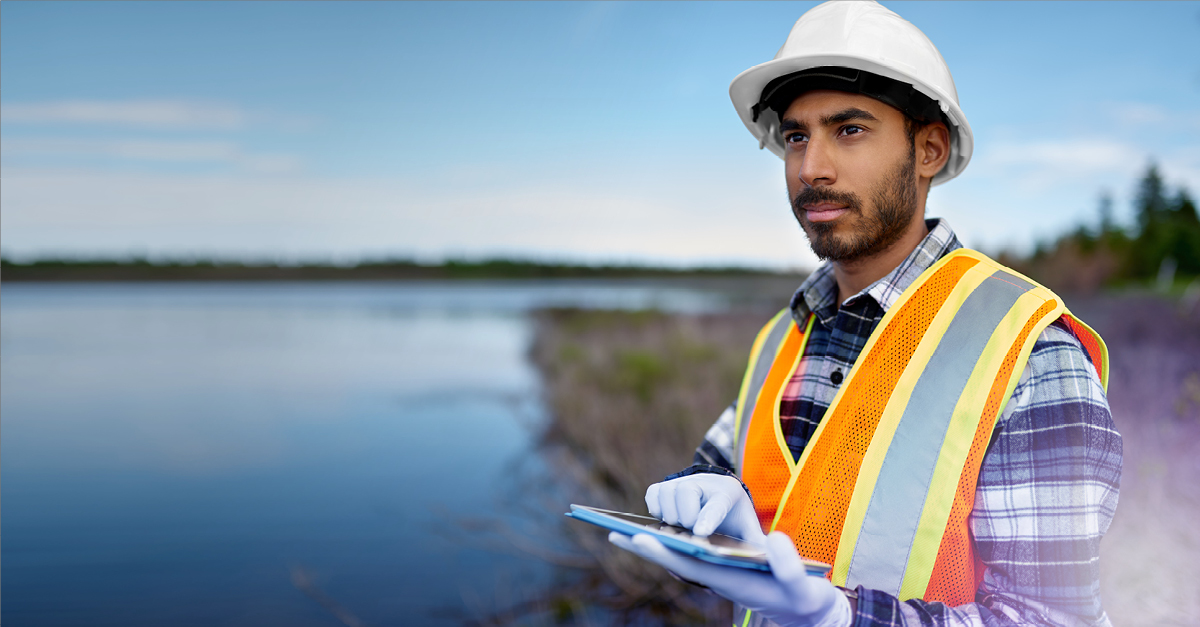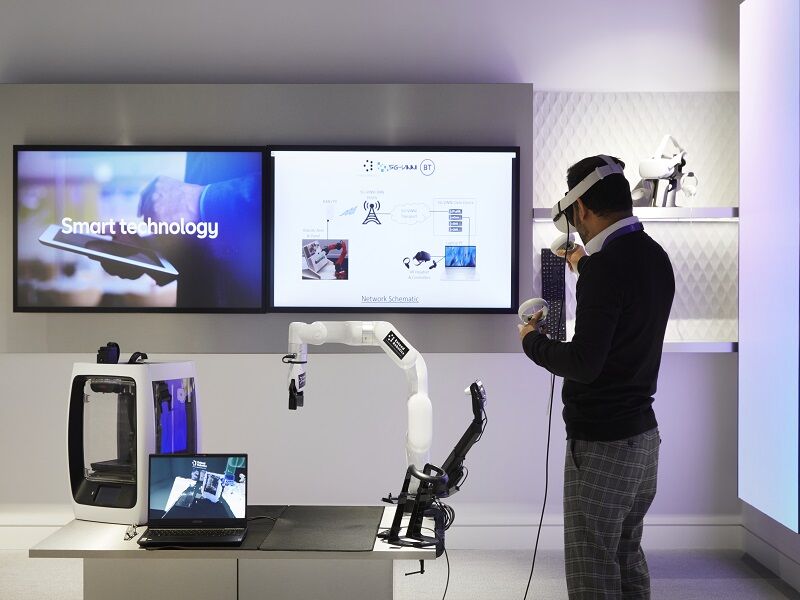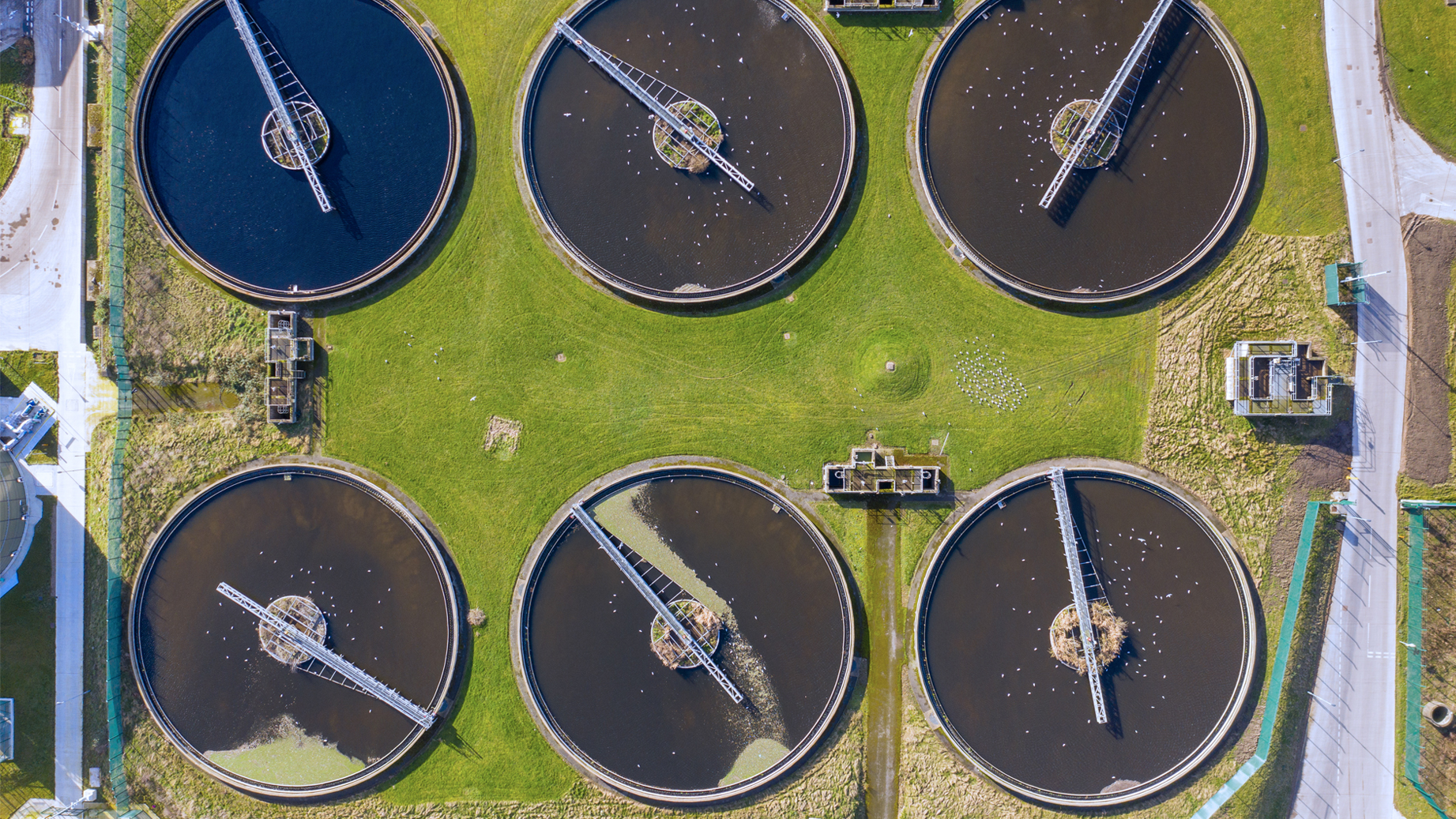Interactive Infographic




On 14 June, we’re bringing your peers, likeminded CIOs and CTOs from leading global businesses together to discuss their challenges, strategies and how to address scalability, sustainability, automation, and security.
We invite you to join the event which will take place at the BT Customer Experience Centre at One Braham, London and discover the opportunity to network, learn from your peers and experience the latest innovative tech. Register here for a free place today.


Transform the water ecosystem into a dynamic digital data network, using the latest IoT technology to enable real-time infrastructure monitoring, which minimises leaks, sewage spills and consumption by quickly spotting and predicting maintenance needs.

Give teams the digital tools they need to communicate and collaborate as effectively as possible, whatever their location, by switching to a fully digital network from the old PSTN and harnessing the best cloud solutions.

Eliminate the heightened cyber threat of digitally transforming the water network, your workforce and customer experience by deploying a zero-trust infrastructure using world-class cybersecurity solutions trusted by military and nation states.

Neque porro quisquam est, qui dolorem ipsum quia dolor sit amet, consectetur, adipisci velit, sed quia non numquam eius modi tempora incidunt ut labore et dolore magnam aliquam quaerat voluptatem.

Ut enim ad minima veniam, quis nostrum exercitationem ullam corporis suscipit laboriosam, nisi ut aliquid ex ea commodi consequatur? Quis autem vel eum iure reprehenderit qui in ea voluptate velit

Neque porro quisquam est, qui dolorem ipsum quia dolor sit amet, consectetur, adipisci velit, sed quia non numquam eius modi tempora incidunt ut labore et dolore magnam aliquam quaerat voluptatem.


"The successful blueprint for saving a UK water supply that’s rapidly running dry and meeting regulatory requirements lies in close collaboration and forging the right partnerships"- Rob Holmes, Utilities Lead at BT.
Water has always been our most precious resource. Nothing can survive without it. It’s also one of our most destructive elements. Nothing can stand in its way.
Global warming is playing havoc with the water cycle. In the UK, hotter, drier summers are running the country dry, resulting in growing periods of drought. Up to 20% less summer rainfall is expected by 2050, according to the UK Environment Agency , with a 20% UK population increase expected over the next 20 years boosting in demand, much of it in drier water stressed areas.
Meanwhile, up to 30% wetter, stormier winters and rapid thaws driven by overnight 13˚C rises in temperature are causing more frequent flooding. This is swamping wastewater infrastructure and sweeping sewage into rivers.
These increasingly extreme weather conditions are putting growing pressure on an ageing water network that performs far better in calm weather conditions and gentle rain. The growing challenge for every water company is conserving as much water as possible and defencing the network from extreme weather. And with global temperatures predicted to rise from today’s 1.5% to a target of 2.7% by 2030 or sooner, things are only going to get worse.
Big strides
Saving water is key. First, reducing the 3,008 million litres that leak from the UK network daily. Second, cutting down the 153 litres a day every British citizen consumes on average. In fact, each must be improved by 16% and 13% respectively by 2025 – the end of the current AMP7 period – or water companies will face fines worth tens of millions of pounds from regulator Ofwat.
With failure not an option, the water and technology sectors are coming together to find the answer through digital innovation. Big strides are being made, but it’s the next step that will prove crucial.
The good news is the tools are here. Smart water meters are encouraging consumers to use less water, and leaks can be detected when they show unusually high readings. Acoustic loggers fitted at key access points in the water network spot leaks quickly by monitoring noise fluctuations with IoT sensors. Pressure flow sensors again use IoT to gauge the amount of water in pipes, instantly identifying supply problems.
On trial
How do we know they work? Through pioneering live trials. In Sheffield, BT, Guterman, Technolog and Honeywell collaborated in partnership with Yorkshire Water. In the largest IoT project in the water sector covering 60,000 properties across 300 kilometres of network, data was successfully networked from 4,000 acoustic loggers, water pressure monitors and flow meters. Meanwhile, 120 acoustic loggers are being trialled in Aston, Birmingham in partnership with Severn Trent, with the plan to extend this to 1,000 across the city and eventually 30,000 across the West Midlands.
Some of the findings from these trials have already proven highly valuable in the fight to save water. One of the most striking was in Sheffield. We found that 31% of leaks were taking place in just 1% of properties. This means resources can be proactively focused where they are needed most, so leaks can be dealt with quickly, with customers kept informed every step of the way. This also helps with balancing out water resources, which is crucial to optimising supply and preventing stoppages. The trial reduced visible leaks by 50% and leakage overall by 44%.
Scaling up
This is incredibly encouraging. We have a solution. But, as I mentioned previously, the next step will prove pivotal. It’s vital these trials are scaled successfully to cover each water company’s catchment area. And there’s no time to lose.
This demands creating the right ecosystem of technology partners. Companies that know water backwards. That are adept at collaborating – even with potential competitors. That are commercially strong and financially robust enough to be there for the long haul to keep the UK’s most critical national infrastructure flowing. That understand and can be flexible enough to accommodate each water company’s specific policy, strategy and needs.
Funds are available for the most innovative projects in the form of the £200 million breakthrough challenge budget. So, innovation must be in each partner’s DNA. But this money cannot be squandered. It must be used wisely on best practice and the best, most reliable products.
Digital flow
Underpinning everything should be a UK-wide, fast, highly robust digital network. It must be able to support the collection and flow of IoT data from every corner of water network, including the analysis and delivery of actionable insight to the right people at the right time, ensuring total visibility.
It must also be able to power artificial intelligence-driven automation seamlessly, which holds the key to a truly smart water network. Plus, stringent, zero risk security is of the essence, both in terms of protecting the increasing amounts of critical data, but also for smart connected surveillance using computer vision to guard physical assets.
Developing and maintaining a smart water network in this way is the blueprint to minimise leakage and solve other challenges across the water industry. But time is running out. We must all come together as quickly as possible to make it a reality.
Keep up with the latest water innovation via our dedicated microsite.
Sed ut perspiciatis unde omnis iste natus error sit voluptatem!
Nemo enim ipsam voluptatem quia voluptas sit odit aut fugit!
Ut enim ad minima veniam, quis nostrum exercitationem ullam!

"Et harum quidem rerum facilis est et expedita distinctio!"

"Nam libero tempore, cum soluta nobis est eligendi."

"Temporibus autem quibusdam et aut officiis debitis!"